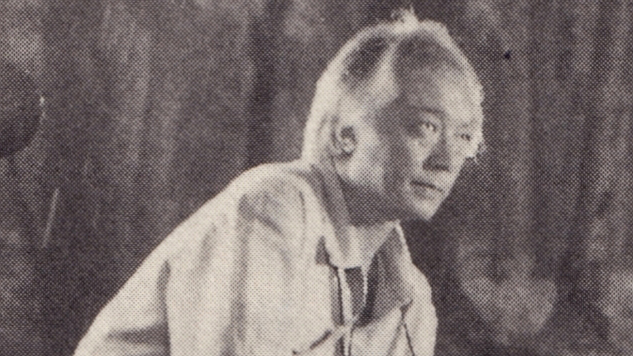
Japan’s Hiroshi Teshigahara, who seemed on track for greatness after winning two Oscar nominations for “Woman in the Sands,” will be the subject of a San Sebastian Festival retrospective.
Nominated for best foreign-language film in 1964, and winning Teshigahara a best director Academy Award nomination a year later, “Woman in the Sands” was just Teshigahara’s second feature, a social and erotic allegory which yoked the political convictions of Teshigahara and screenwriter Kobo Abe, both members of Japan’s communist party in their youth, with Abe’s penchant for the darkly surreal.
Turning on an entomologist from Tokyo who discovers a young widow living at the bottom of an enormous sandpit on a deserted beach, it also won a Cannes Special Jury prize. Hailed as a masterpiece, and building on 1961’s “The Pitfall,” a political allegory which won Teshigahara fans, with Abe adapting his TV play, it looked like Teshigahara would find a niche on the same pantheon as contemporaries Nagisa Oshima and Shohei Imamura.
Two more Abe adaptations of his own novels followed: “The Face of Another” (1966) and “The Man Without A Map (1968), which San Sebastian describes with “Woman in the Sands” as Teshigahara’s “key works.” Neither, however, were particularly successful.
So the retrospective will offer a chance to revalue these two movies and other later relatvely overlooked works – including 1972’s “Summer Soldiers,” the tale of an American GI who deserts in Japan to avoid being sent to Vietnam, in a career which ran parallel with Teshigahara ’s heading Japan’s huge Ikebana Sogetsu school from 1980, teaching the art of flower arrangement.
Though making less of an international impact, beyond “Woman in the Sands,” than many other members of his generation, Teshigahara was still “a key figure in Japanese cinema in the 1960s thanks to a series of experimental poetic films and his extensive collaboration with the writer Kobo Abe,” San Sebastian argued announcing the retrospective on Thursday.
”In one way or another, he was right at the heart of the conceptual turmoil that turned Japanese cinema upside down through new subject matter and ways of filming,” it added.
The retrospective will be accompanied by the publication of a book of interviews with the filmmaker published in collaboration with the Basque Film Archive.
At a time when much of the world’s industry is looking to breath a new originality into crime dramas, scripted TV’s principal international export, San Sebastian’s 2024 classic film showcase will focus on Italy’s “poliziotteschi”movies, singular crime-action movies which captured the upheaval of Italy’s so-called Years of Lead – though their most obvious influence was U.S. movies, led by Don Siegel’s “Dirty Harry.”













